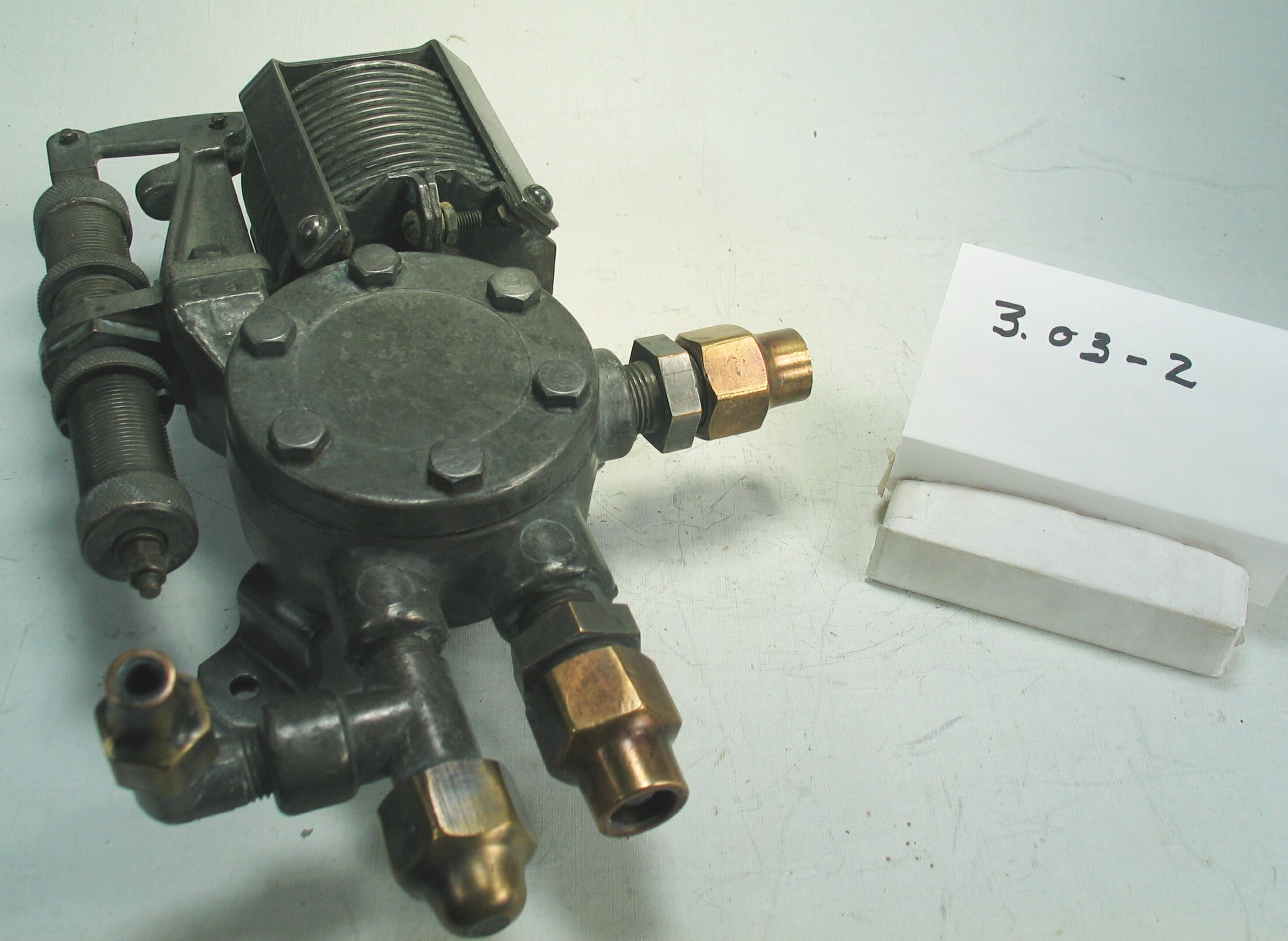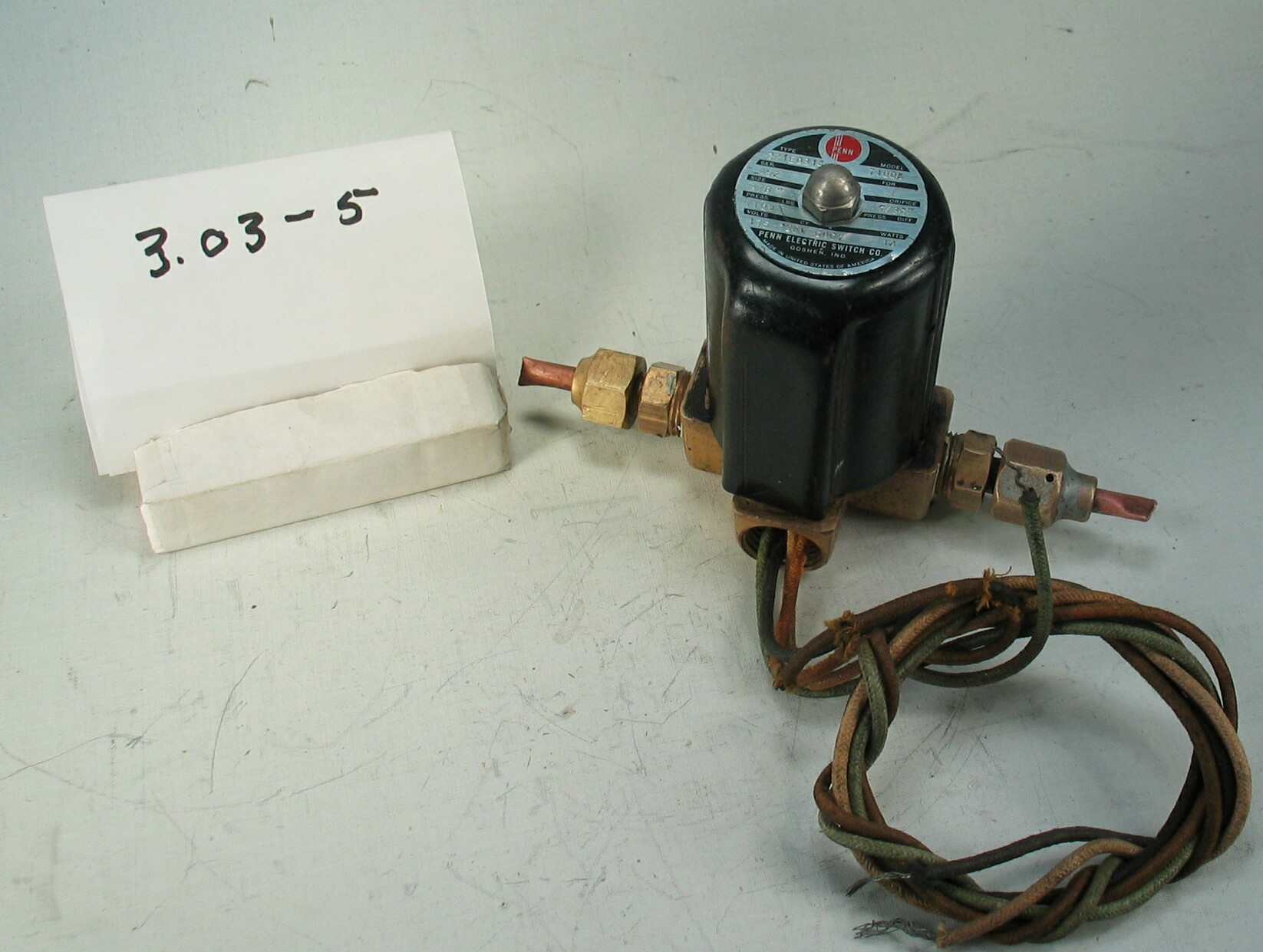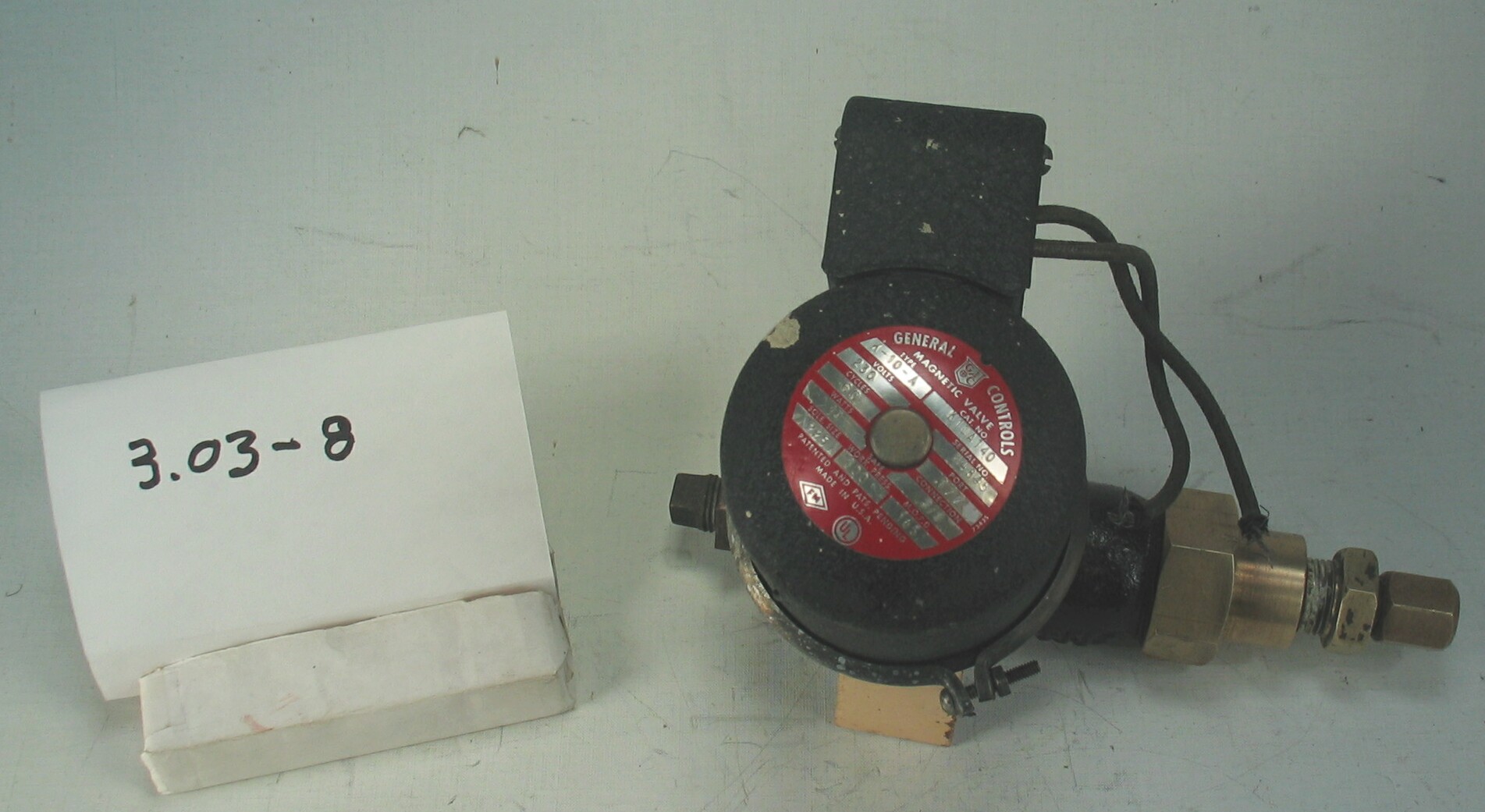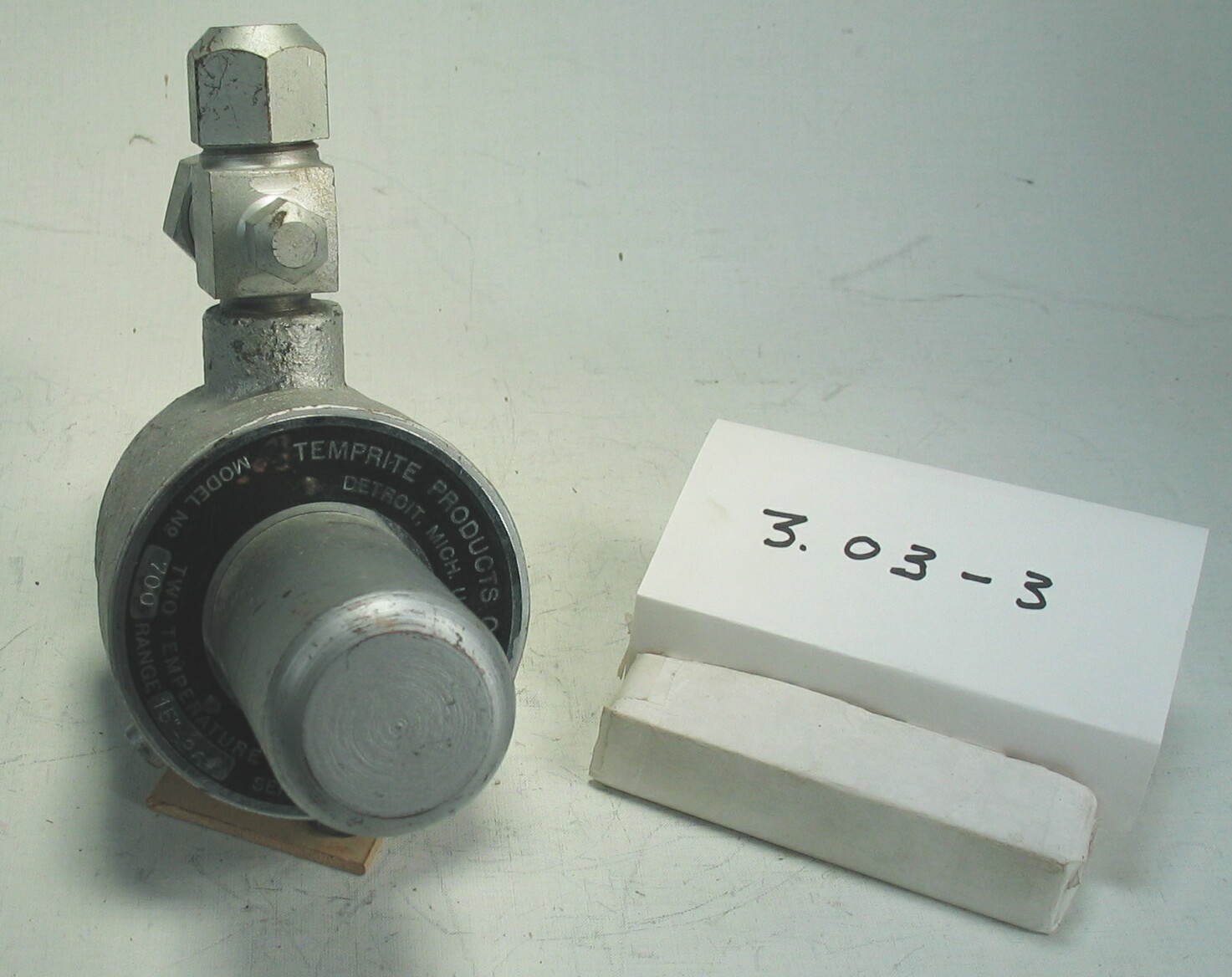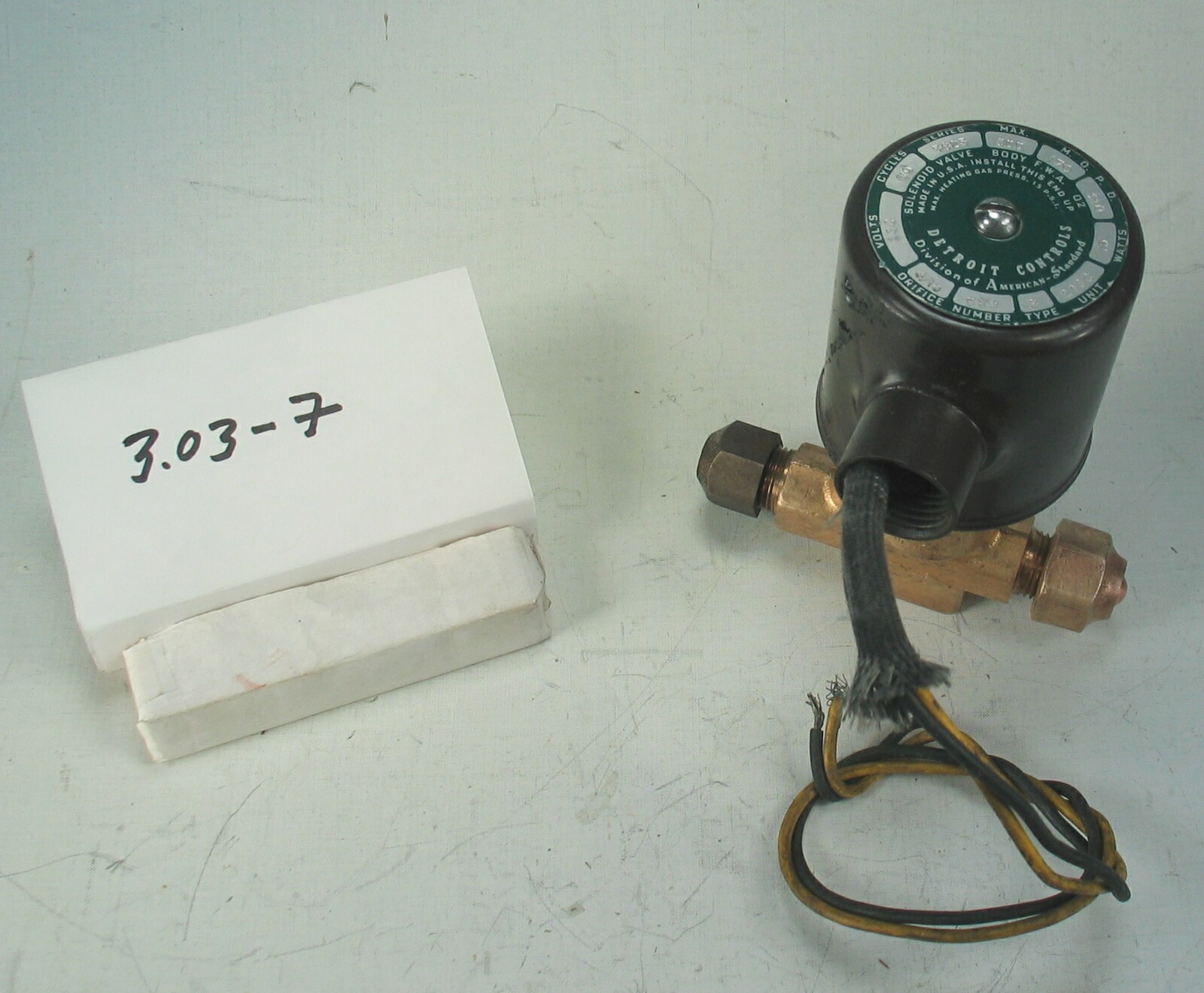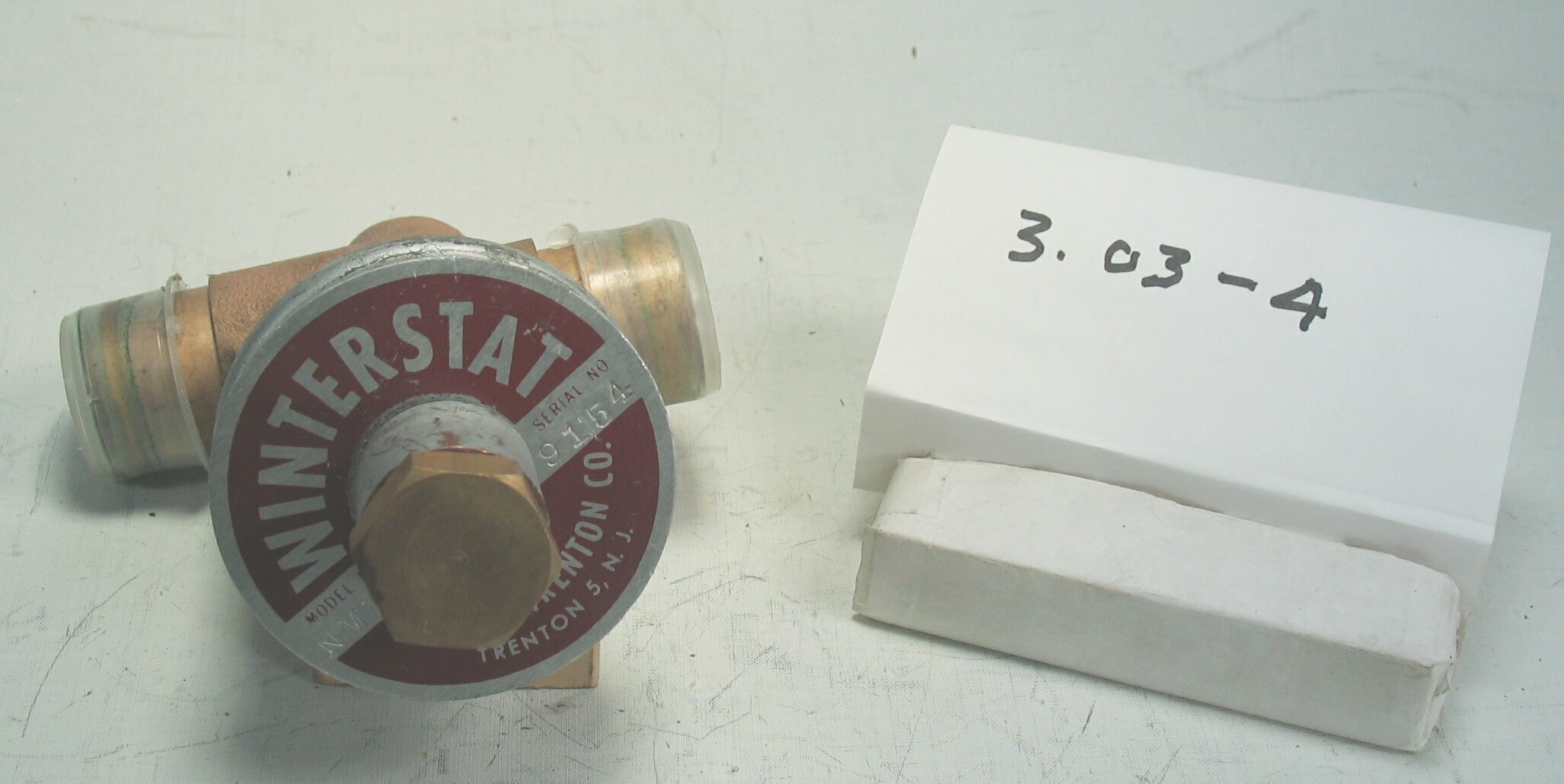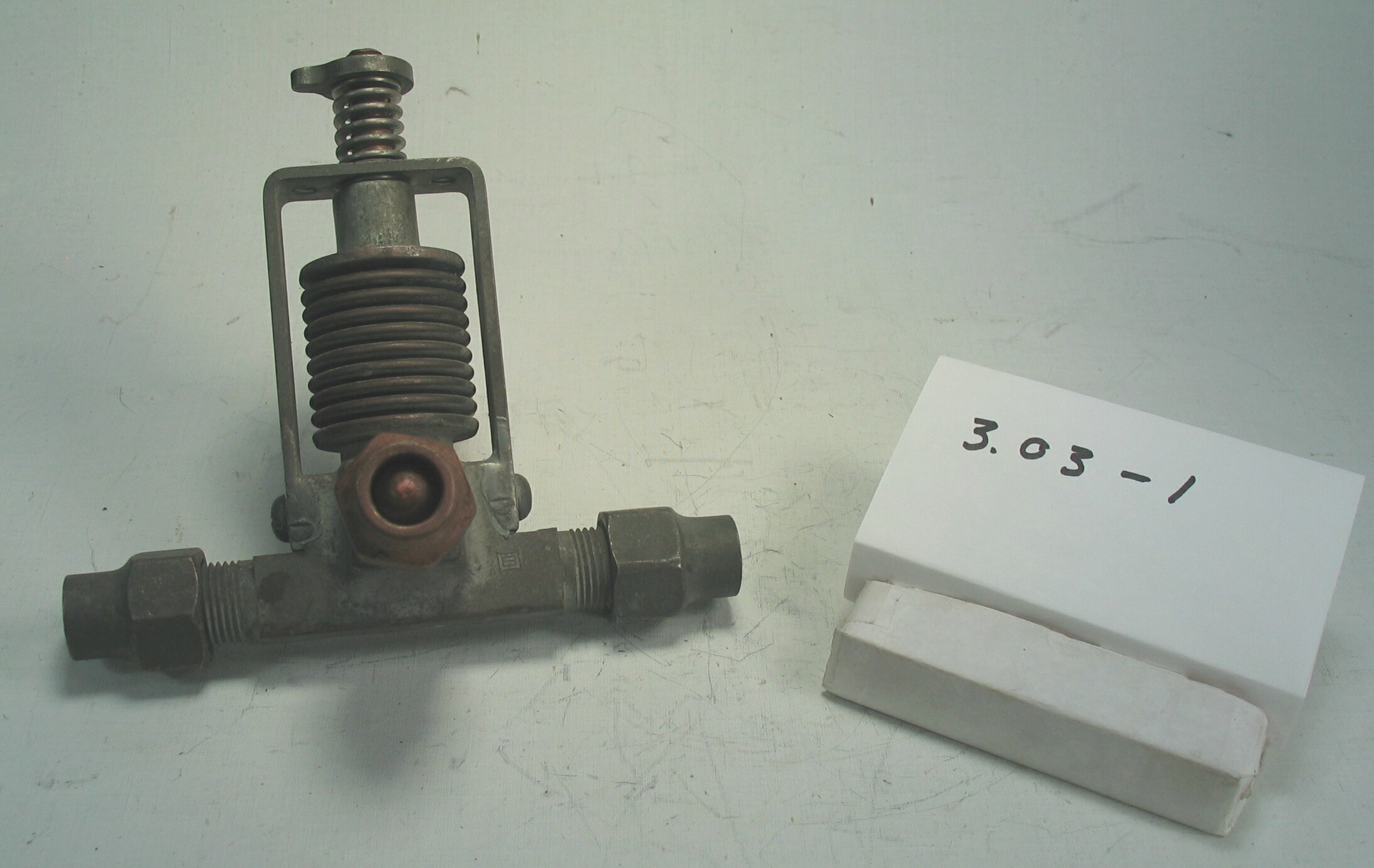3.03-6: Penn 1939 Electro-Magnetic Flow Control Valve
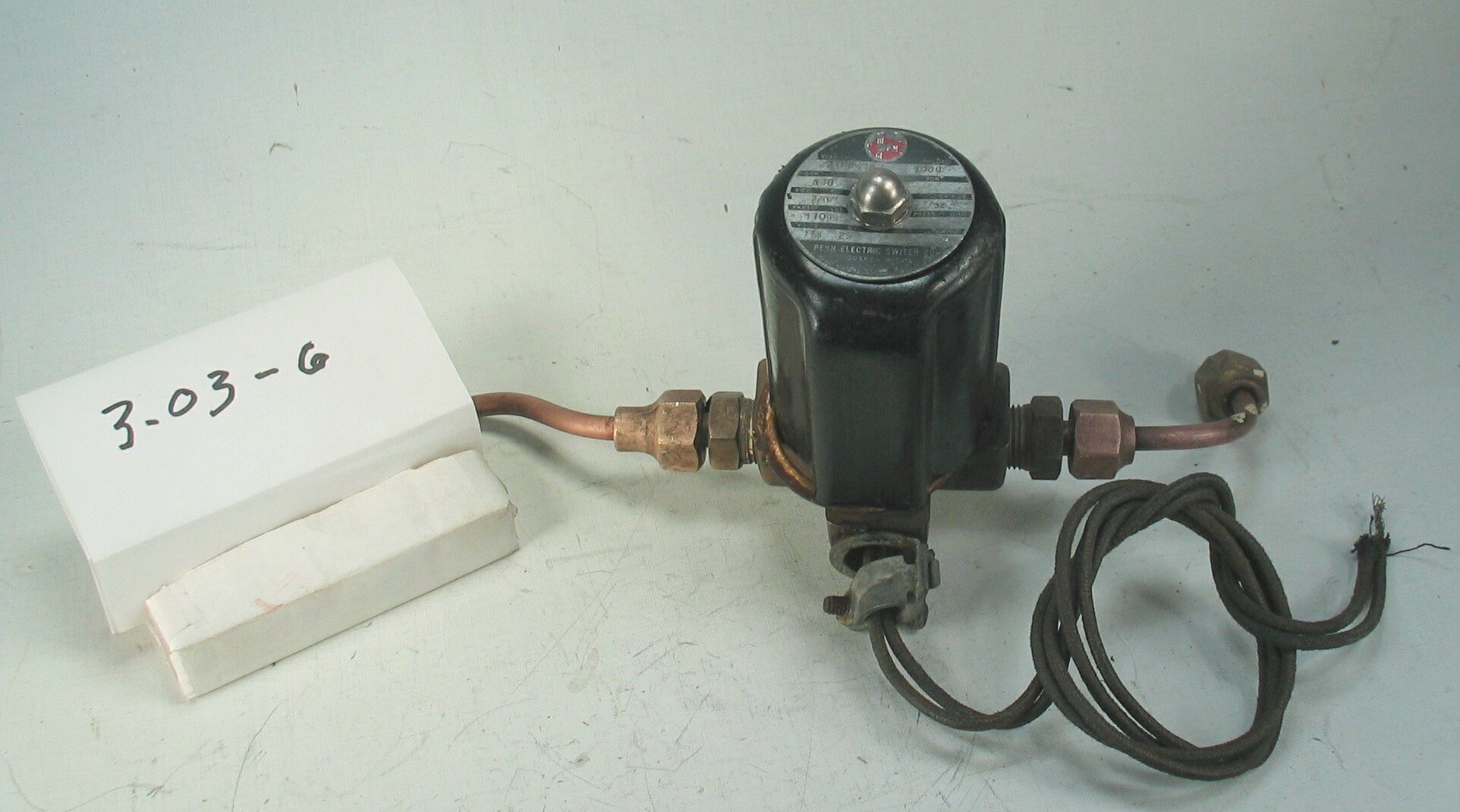
| HHCC Accession No. 2006.073 | HHCC Classification Code: 3.03-6 |
|---|
Description:
A late 1930’s, electro-magnetic solenoid, refrigerant flow control valve for low pressure refrigerant applications, designed for sulphur dioxide, methyl chloride and Freon, with brass body and press formed, ferro-magnetic cover in fashionable art-deco styling, alternating current, 25 cycle, with single voltage 110volts coil, with 24 inch stranded wire leads, Pen Electric Switch Co., 1939
Group:
3.03 Refrigerant Flow Controls - NEC
Make:
Penn
Manufacturer:
Pen Electric Switch Co, Goshen, Indiana
Model:
1400, Type 221E0314
Serial No.:
A48
Size:
4 x 3 x 5’h
Weight:
6 lbs
Circa:
1939
Rating:
Exhibit, education, and research quality, illustrating the engineering and application of electro-magnetic solenoid switching, refrigerant flow controls in operation in the pre W.W.II years
Patent Date/Number:
Provenance:
From York County (York Region) Ontario, once a rich agricultural hinterlands, attracting early settlement in the last years of the 18th century. Located on the north slopes of the Oak Ridges Moraine, within 20 miles of Toronto, the County would also attract early ex-urban development, to be come a wealthy market place for the emerging household and consumer technologies of the early and mid 20th century.
This artifact was discovered in the 1950’s in the used stock of T. H. Oliver, Refrigeration and Electric Sales and Service, Aurora, Ontario, an early worker in the field of agricultural, industrial and consumer technology.
Type and Design:
- 25 cycle electro-magnetic
Construction:
- brass body
Material:
Special Features:
Stylish company logo in red and black, reflecting the aesthetics of the art-deco period Vertically ribbed case in gloss black, art-deco styling, reflecting new interest by engineering manufacturers in the styling of their products demonstrating quality through eye appeal The manufacture of flexible, multiple stranded copper wire with braided cotton covering was itself a miracle of the period. Solenoid valves were typically subject to mechanical and electrical stresses in operation. Much of the longevity of the solenoid coil would depend on an electrically and mechanically secure junction between coil winding and connecting power leads. A matter of note is the heavy varnished craft paper insulated coil covering, part of the electrical insulation system designed to protect the magnetic coil from the dampness characteristic of many machine room environments. In a period prior the development of synthetic, inorganic insulations materials with high dielectric strengths, the engineer must rely on natural organic materials such as coated papers and cotton The streamlined, heavy brass mounting boss, tapped for two 10-32-machine screws for support of the valve is representative of the care given by the manufacturer to the sophisticated engineering design. The sophisticated valves seat and needle assembly employing non-magnetic stainless steel was a major engineering achievement of the times in precision, repetitive manufacturing processes ‘ see cited for engineering description.
Accessories:
- wire connector exemplifying the convention of the period
Capacities:
Performance Characteristics:
Operation:
Control and Regulation:
Targeted Market Segment:
Consumer Acceptance:
Merchandising:
Market Price:
Technological Significance:
It was the 1930’s and the modern miracle of the moment was electro-magnetic force in all its myriad applications ‘ much as digital technology would come to be by the end of the century and millennium. The increasingly sophisticated mechanical contrivances of the 1930’s, including the internal combustion engine and the mechanical compression refrigerator, would wait on a somewhat slower technology to develop in the form of electro magnet devices . In the case of the internal combustion engine it would be the electric ignition coil. In the case of the refrigerator it would be the electric motor [see artifacts Series 16.00] and electro-magnetic controls.
But in the 1930’s the principles of alternating current, electrical circuits, as well as magnetic circuits were little understood, by those who would like to apply them. By the 1870’s Farada’s experiments in electromagnetism of the 1840’s and 50 had only just been translated into the mathematical formula needed for precise engineering design. And Steinmetz would not set out the basic parameters for the design of electromagnetic circuits until the early years of the 20th century. But the market place could not wait, engineering design proceeded with the scant knowledge available - with much trial and error.
The electric solenoid valve, a kind of linear electro- magnetic engine, was seen as a way to open and close a valve, without the human hand. It was its own special brand of magic, an invisible electro-magnetic field able to regulate fluid flow on the call of an electric controller or manual switch.
Eshbach’s classic ‘Handbook of Engineering Fundamentals’, 1936, Section 8-24, describes the elemental formula for calculating the force produced by solenoid, magnetic coil. The Penn Electric Switch Co. describe in their 1939 catalogue, covering 220 and 221 series alternating current, solenoid valves, something of the engineering development and testing entailed in producing a reliable electric valve for refrigeration liquid line applications.
Twenty-five cycle alternating current, in common use in Ontario prior to the late 1940’s, would prove to be a more challenging electro-magnetic circuit design problem than 60 cycle, due to added heat production.
Industrial Significance:
Refrigerant flow control quickly became a matter of interest for refrigeration system design engineers in the 1930’s with the development of low-pressure refrigerants and a growing market for small versatile, mechanical refrigeration systems - able to operate multiple evaporators, often at different suction temperatures. The suction pressure regulating valve was one solution [See ID # 192, 193, 194]. The solenoid valve with electric pressure or temperature actuated controller was another option awaiting development.
From the 1930’s thorough 1950’s the industry produced electric solenoid valves in a wide variety of configurations and sizes, to perform a wide range of system functions, each with different performance requirements and characteristics, each manufacturer bringing to the market place his unique approach to engineering design and construction. Some of these are illustrated in the collection ID # 196 to 200:
ID # 196 ‘ Penn, brass body, 3/8 IPS, 7/32 orifice, 60 cycle, dual voltage 115/230 volts AC, 14 watts, adapted for two point mounting bracket, circa 1939
ID # 197 ‘ Penn, brass body, 3/8 IPS, 7/32 orifice, 25 cycle single voltage 115 volts AC, 14 watts, adapted for two point mounting bracket, circa 1939
ID # 198 ‘ Detroit Controls, brass body, 3/8 flare, 3/16 orifice, 60 cycle single voltage 130 volts AC, 15 watts, Circa 1957
ID # 199 ‘ General Controls, steel body, 3/8 IPS inlet, 3/8 outlet with brass half union connection, 177 port, 60 cycle single voltage 230 volts AC, 14 watts, Circa 1960
ID # 200 - Automatic Products [AP], brass body, with manual lift, ‘ inch sweat, inlet and outlet, 3/8 orifice, 60 cycle single voltage 120 volts AC, adapted for single point mounting bracket, 16 watt, Circa 1955
Socio-economic Significance:
For cost considerations, in the era of ‘open’ refrigeration systems, in the late 1920’s through to the pre World War II years, a popular practice was to operate two or more evaporators, even those at different temperatures, on a single condensing unit, a design known as multiplexing. The design of multiplexed, commercial refrigeration systems was a significant part of the evolution of the early 19th century Canadian commercial refrigeration industry. The electric solenoid valve played a major part in this evolution, changing Canadian’s expectations of the range of fresh foods and confectioneries available from there local friendly down town merchant.
Socio-cultural Significance:
Donor:
G. Leslie Oliver, The T. H. Oliver HVACR Collection
HHCC Storage Location:
Tracking:
Bibliographic References:
Penn Automatic Controls, Powerlite Devices Ltd, Toronto, Penn Solenoid Valves for all Applications, brochure, Penn Electric Switch Co. Goshen, Indiana, 1939 Handbook of Engineering Fundamentals, Section 8-24,Ovid W. Eshbach, John Wiley and Sons, 1936
